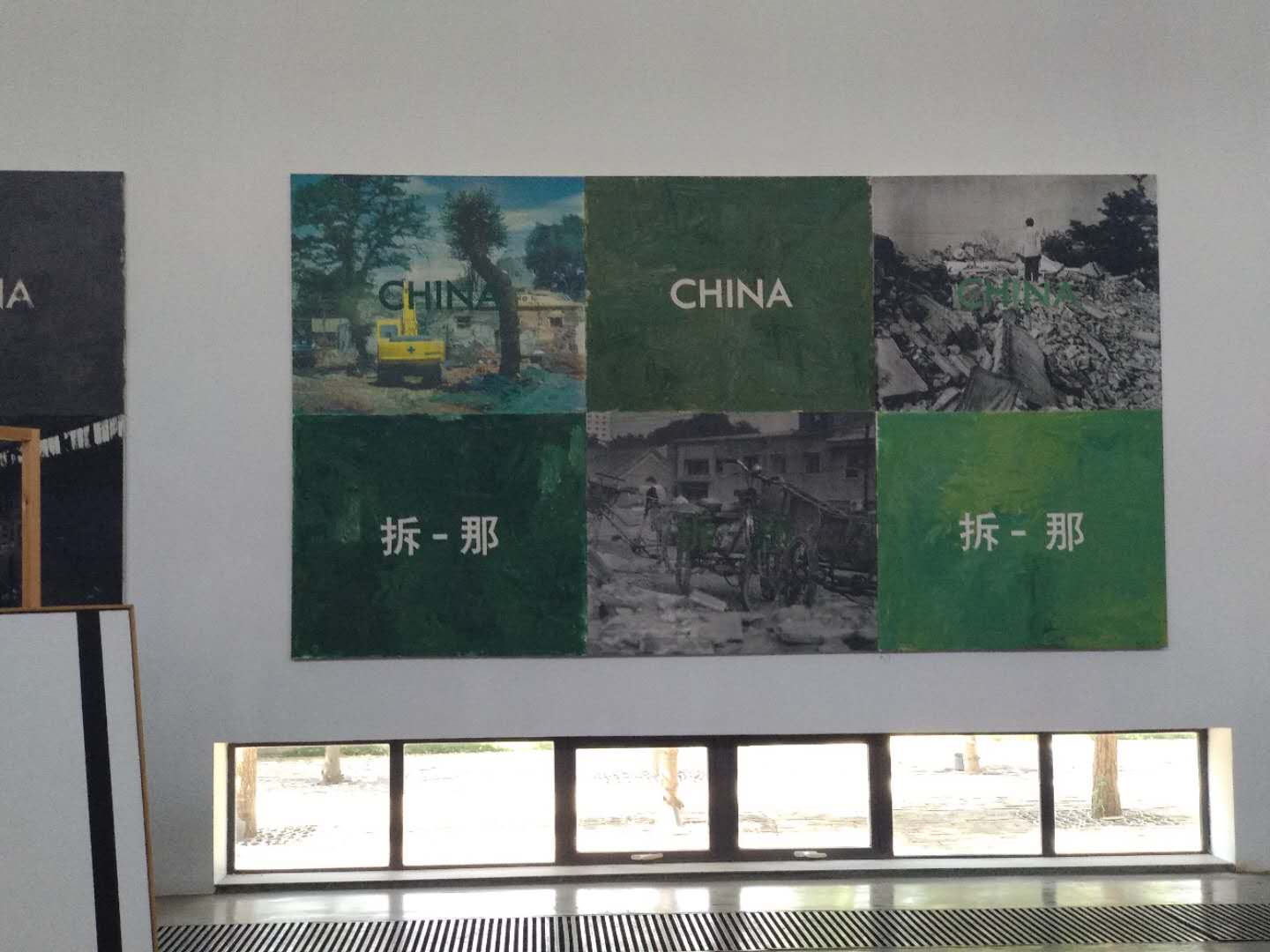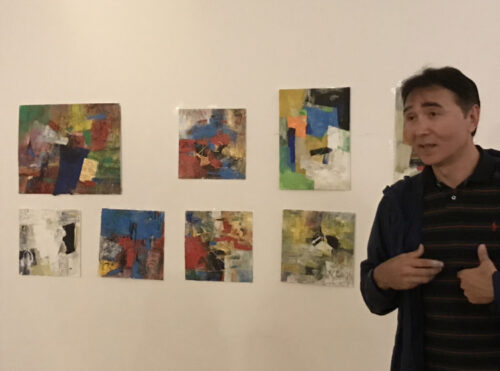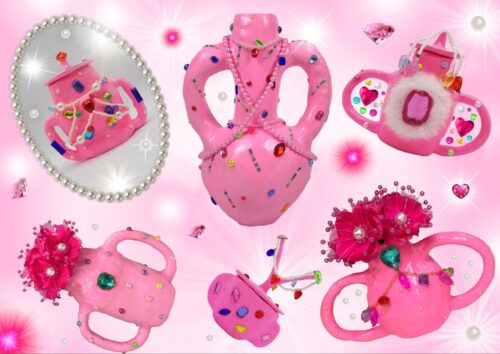The People’s Republic of Chai-na

How do artists in Beijing cope with the inevitability of eviction, demolition — 拆 (chāi)?
In the past, they have been able to find more remote places to establish new colonies, moving a ring road or two out with each displacement.
But it feels different this time, following the destruction of the bustling art colony at Heiqiao last summer.
Photo by Anthony Tao

There is no way to reach Mstudio by public transit. To get there one must take a taxi to Beijing’s northeastern fringes and keep going, passing 798 art district, the National Film Museum, and newly sprouted apartment skeletons, until finally any hint of urban fabric drops off and you are in what appears to be the countryside. Your cab trundles over a set of railroad tracks — the circular test track that gives this area its name, Huantie 环铁, is a remnant from the 1950s — and continues into the darkness; on the narrow winding lane you slow down to overtake a farmer riding a tricycle. When your driver finally deposits you in front of Heiqiao Kindergarten 黑桥幼儿园 — the only building on this road, everything else is dirt and scrub — you look back in the direction from which you came and make out apartment towers twinkling in the distance.
Mstudio wasn’t always so lonely. Protected by the fact of its location in a rear annex owned by the kindergarten, it is one of the rare few art spaces to have survived the wave of demolitions that hit Huantie in the summer of 2017, wiping out in less than a month what was once Beijing’s most lively and cutting-edge artist village — by some estimates, home to at least 2,000 artists during its height. Lured by plentiful, cheap space, Beijing artists have long settled in clusters along Beijing’s urban fringe, usually renting space from farmers in peripheral villages like Heiqiao. This phenomenon emerged in the early 1990s, with the establishment of an artist colony in Beijing’s northwest, near the Old Summer Palace (Yuanmingyuan 圆明园). After that was demolished, artists moved east, cropping up in places like 798, Songzhuang 宋庄, Suojiacun 索家村, Feijiacun 费家村, and Caochangdi 草场地. Historically, these colonies have met one of two fates: Those you’ve heard of — like 798, Songzhuang, and Caochangdi — have been co-opted by the local government as a source of tourism revenue, making the colonies unaffordable for artists; those you probably haven’t heard of — Yuanmingyuan, Suojiacun, and now Heiqiao — have been leveled.
Whether priced out or slapped with a demolition notice, Beijing artists have always been able to find another, more remote place to establish a new colony, moving a ring road or two out with each displacement. But this time is different. Almost a year later, it seems unlikely another village of Heiqiao’s scale and vitality will emerge. In the campaign to turn Beijing into a “high-level” international city, the Chinese government is determined to finally stamp out any and all manner of informal settlement, whether it is inhabited by artists or by migrant workers. The wave of evictions and demolitions that ravaged Beijing’s southern Daxing District in November, leaving tens of thousands migrant workers homeless, was seen by many in Beijing’s art community as the final straw.
I came to visit Mstudio because I had been hearing rumors that artists were fleeing Beijing in droves. I wanted to know if this was true, and if so, what was being lost. A tall one-room loft at the back of Heiqiao Experimental Kindergarten, Mstudio is an exhibition space run by Mi Nuo, 45, an art promoter and writer from Xinjiang who has been intimately involved with Beijing’s contemporary art scene for more than 15 years. On the second to last day of 2017, a freezing Saturday evening, a few dozen artists were assembled there for what had been billed as an end-of-year party, but had more the air of a somber gathering. Mi kicked off the event with a slideshow recapping the exhibitions that had taken place in Mstudio over the course of the year. Into the retrospective she inserted slides to commemorate two events: the tragic death of the photographer Ren Hang 任航 in February; and in July, the leveling of Heiqiao artist village and near-demolition of Mstudio.
“The more you love Beijing, the more it will hate you.”
After Mi concluded the year-in-review, attention turned to the rear of the space, where a cluster of human-sized boxes had been set up, each affixed with an iPad. Six of the artists present climbed into the scaffolds and took up their respective instruments, starting in on an eerie, discordant dirge. As the music accelerated, blue and purple light flickered over the performers’ faces, which turned into clowns and animals when they passed behind the iPad. This was “Post-Internet,” a cross-disciplinary performance art piece by five artists collaborating under the name “Fabricated Union” (莫须有工舍 Moxuyou Gongshe).
After the show, I talked to the “Post Internet” drummer, an artist from Sichuan called Jia Jing 贾靖. Like many Beijing artists, Jia, 36, had originally come to the city to study at the Central Academy of Fine Arts (CAFA), China’s most prestigious art school. Three years ago he moved out to a studio in Heiqiao, just across from Mi Nuo’s in the kindergarten annex. He said that the constant threat of demolition has made him cynical. “I used to have a dream,” he told me. “But now I’m no longer pursuing a dream. All I care about is that I can keep working.”
Mi told me that Jia’s hard-nosed attitude was far from uncommon among young artists. To live as an “outside-the-system” (体制外 tǐzhì wài) artist in an informal village like Heiqiao, she pointed out, is to exist in a state of chronic economic instability. Whereas “inside-the-system” (体制内 tǐzhì nèi) artists who work for a company or the government and live in villages like Songzhuang that are managed (and monitored) by the local authorities may have health insurance and enjoy a certain degree of protection from demolition, freelance artists like Jia have no such guarantee. They are completely vulnerable to the vagaries of urbanization and whims of local government officials.
But the most devastating component of demolition, Mi said, is the loss of a studio. When artists move into villages like Heiqiao, they must invest a vast quantity of time, money, and resources in constructing a livable studio. To lose that studio — typically with no compensation — represents an economic loss from which it is hard to recover. Even if an artist has the resources to immediately find a new space and turn it into a studio, there is no guarantee — especially recently — that it won’t be demolished within the year. This makes it hard to stay in Beijing. Mi recalls visiting a friend who had moved into a small apartment after his Heiqiao studio was demolished. He had two rooms: his tiny bedroom, and a larger room into which is huge paintings had been crammed. “It was so pitiful, seeing that,” Mi remembers. Not long after she visited him, she says, he moved to Shanghai.

While 798 now brings in an estimated 4 million guests a year, the expense and monitoring associated with working in a government-run tourism district means that less than 15 artists still have studios there. One artist likened the remaining artists to “pandas in a zoo.”

A 10-minute drive from Mi Nuo’s courtyard, hidden behind a grove of newly planted trees, is the three-story studio of Huang Rui 黄锐, one of China’s most famous contemporary artists. I came to visit one sweltering afternoon earlier this month because I wanted to ask Huang about the relationship between artist villages and demolition in Beijing. Born in Beijing in 1952, Huang is no stranger to the experience of 拆迁 (chāiqiān), i.e., demolition. His earliest memories are of monks being evicted from hundreds of temples lining the city periphery to make way for Communist Party offices. Less than a decade later, most of those temples were destroyed in the chaos of the Cultural Revolution, a period Huang spent mostly in Inner Mongolia as a “sent-down youth.” After Chairman Mao died, Huang returned to Beijing and joined the growing movement of youth trying to grapple with their country’s turbulent recent history through art, in 1978 co-founding with Ma Desheng 马德升 the legendary avant-garde art collective Stars, which also claimed Ai Weiwei 艾未未 as a member. In the early ’80s, Huang left for Japan, where he spent a decade living in a more than 100-year-old building from the Meiji restoration period.
Huang said that destruction of old buildings he witnessed in his youth and his experiences in Japan prepared to him to see the potential in No. 798 Factory, an old military factory from the 1950s located just outside the Fourth Ring Road in northeast Beijing. Huang moved into 798 in 2002, spearheading a mass migration of Beijing artists into the complex of cavernous, Bauhausian buildings. For a while, it was an artists’ paradise: in the early 2000s some of China’s most interesting and dangerous contemporary art came out of those few square blocks. But in the lead-up to the 2008 Olympics, 798, like seemingly every other corner of the city, came under fire. Official plans were to level it and build a power plant; Huang decided to resist. “The plan had nothing to do with the people who were living there,” he said. “It had nothing to do with people’s real lives.”
In the end, the Beijing government, realizing the potential for tourism revenue, decided to bring 798 under direct municipal control and turn it into an “art tourism district,” a strategy that would later be deployed in Caochangdi and Songzhuang and other major cities across China. While 798 now brings in an estimated 4 million guests a year, the expense and monitoring associated with working in a government-run tourism district means that less than 15 artists still have studios there. Huang wryly likened the remaining artists to “pandas in a zoo.” Still, he says, he approves of what was done with 798; he believes touristification was the only way to save it: “Government officials understand commercialization. Commercialization isn’t too sensitive.”
In 2007 Huang joined the hundreds of artists who fled to the freer creative environment of Huantie, where he built the studio in which he has been living and working for more than a decade. Designed as a twist on the traditional siheyuan (traditional courtyard) style, the studio is made from Yuan and Ming dynasty bricks salvaged from Beijing demolition sites, including that of Huang’s childhood home. One of Huang’s most famous works is the ongoing series “China/Chai-na,” which examines the impact of wanton demolition in the run-up to the Olympics; the paintings from this series still adorn his studio walls. It is no small irony, then, that he will have to pack them up soon: his studio was slated for demolition along with the rest of Huantie art village last year. So far, he has succeeded in resisting. Huang, whose wife is French, wrote a letter to French President Emmanuel Macron during the French state visit earlier this year, pleading for diplomatic intervention. Macron obliged, and in response the Beijing government has said it will save the studio — on the condition that Huang leaves. Huang says he has made peace with it.
“I hope that this place can become a monument to the experience of chaiqian,” he said, chuckling.

Up until a few years ago, Huang told me, he would have still encouraged young artists to move to Beijing to work. But now is different. “Government officials say they want to make Beijing into more of a socialist city, but in reality they want to make it into a Communist Party city,” he said. “They want to make the city completely without human character — more mechanical, more controllable. And artists — they’re like Tibetans or Uyghurs,” referring to the supposedly restive ethnic minorities whom city authorities have all but expelled from Beijing. Huang said that young Chinese artists should look to Shenzhen instead, where they will have greater access to the booming Hong Kong art market.
“The more you love Beijing, the more it will hate you,” he sighed. He told me he is planning to move to Paris soon, to live the out the last part of his life in peace. As for Beijing — he believes it will rise again, eventually. Government officials are hoping to turn Beijing into a “center of politics, science, and culture,” he pointed out, alluding to a government slogan — “and if you have no artists, what kind of culture are you going to have?”
But not everyone can move to Paris. Jia, the artist from Sichuan, says he will do his best to stay in Beijing. If his next studio gets demolished, however, he is determined to go back home to Sichuan.
“At least my family can’t kick me out,” he said.






